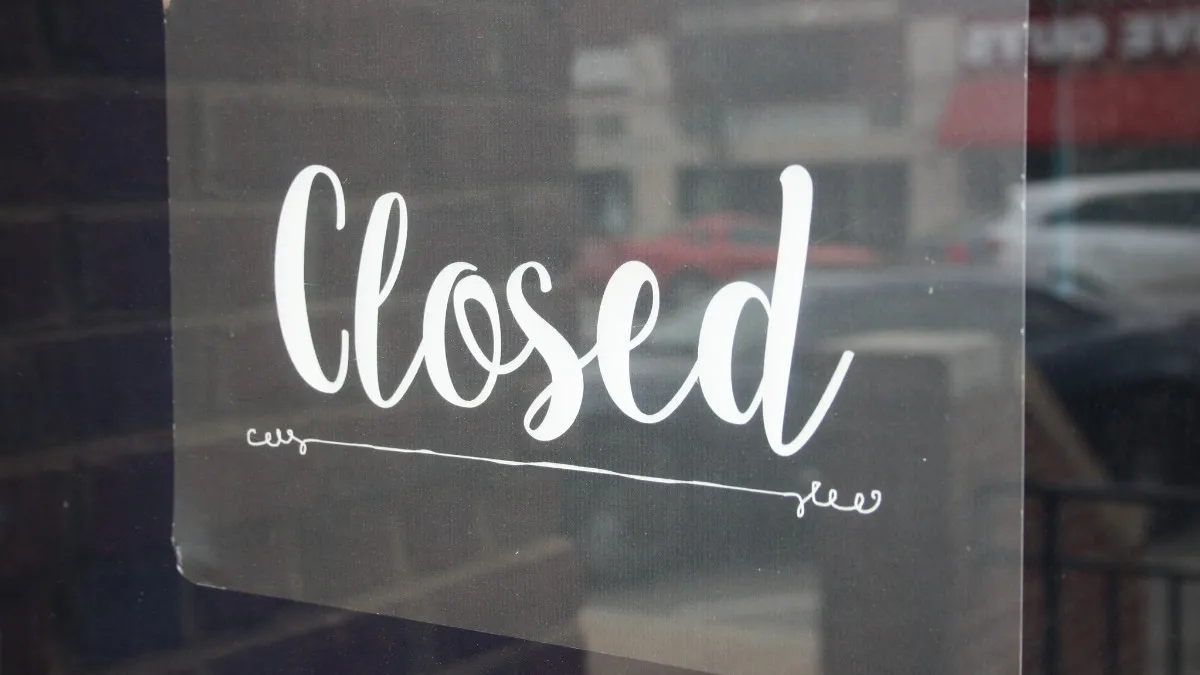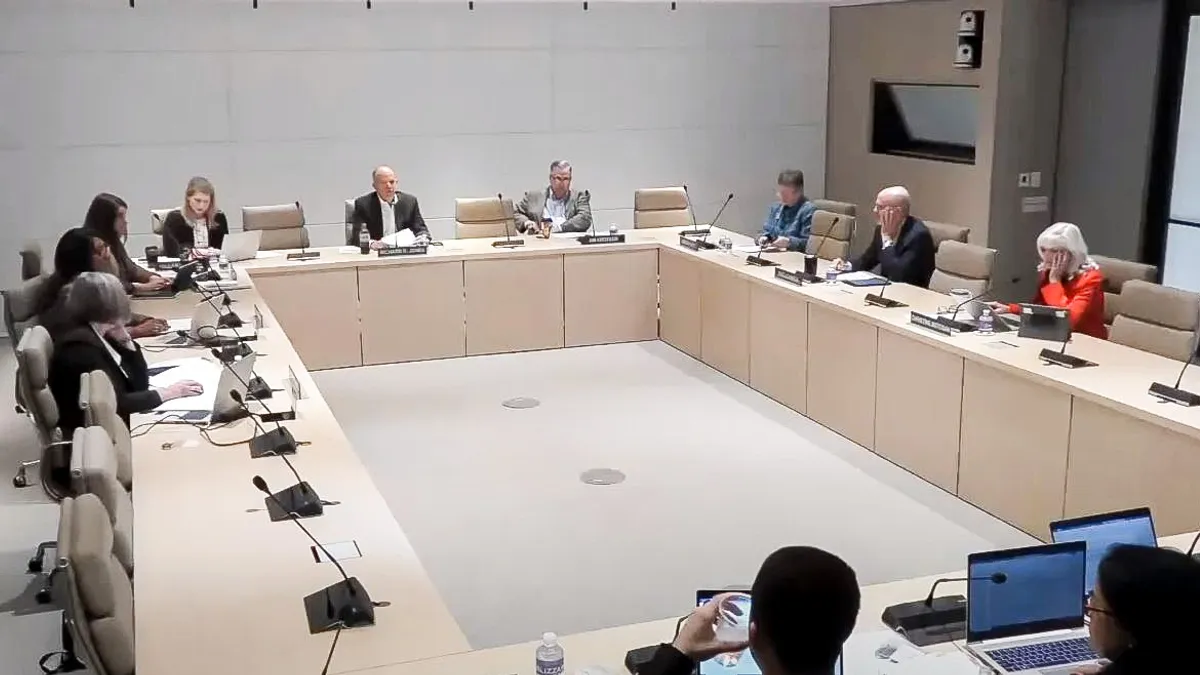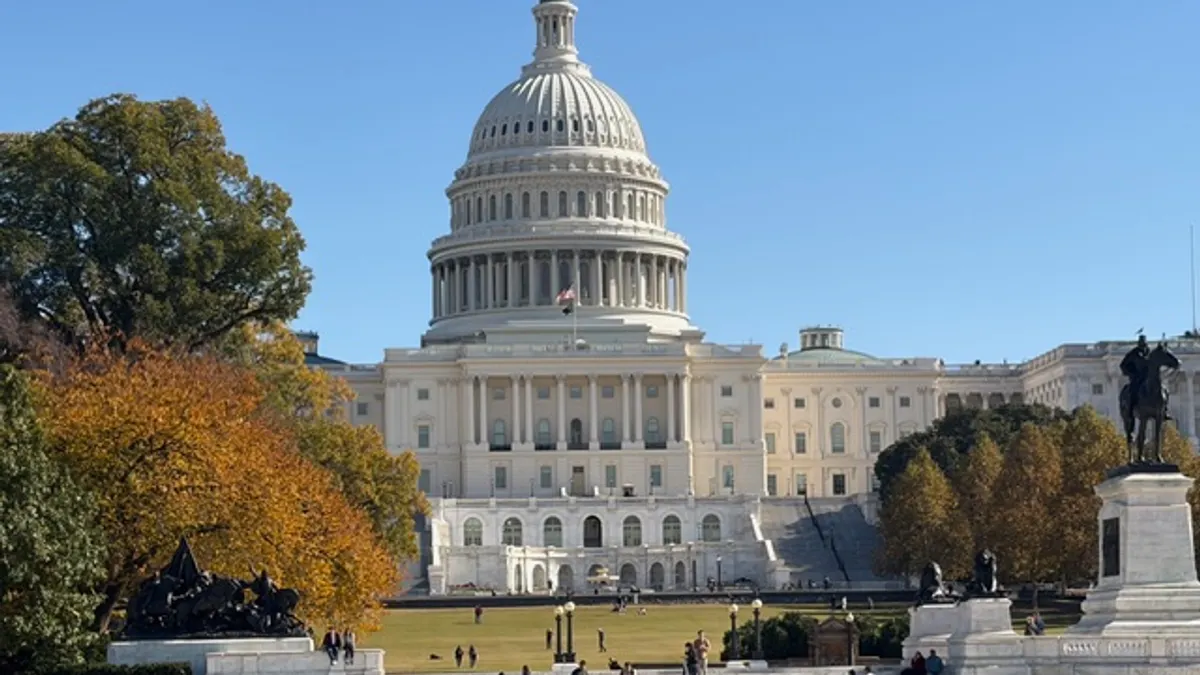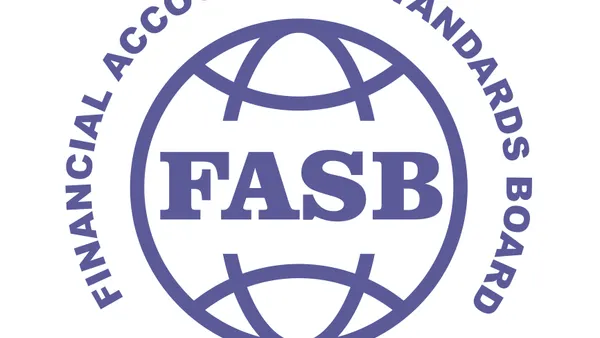The federal government's loan program to help businesses get through the downturn isn't helping because of its focus on payroll support, small business owners say.
In rules written by the Small Business Administration (SBA) and the Department of Justice, at least 75% of funds given to business owners under the $660 billion Paycheck Protection Program (PPP) must go towards retaining or rehiring employees who would otherwise be out of work.
Business owners say the intent to keep money flowing to employees is understandable, but it misses the mark on what is needed: funds to meet operational costs like rent and utilities.
"A payroll loan when you're in mandatory closure doesn’t have a ton of benefit," Timothy Kaltaler, DDS, owner of a family dentistry office in Liverpool, New York, told CFO Dive.
Prior to the downturn, Kaltaler employed seven people, including dental hygienists and a receptionist. His intent in applying for the loan was to have the bank hold the funds so he could use them to bring back staff once mandated closures lifted. But after getting his application approved, he was told he had to take the loan immediately and use it within eight weeks, so he deposited the money into an account, where it sits unused.
Were he to use the money now, he would have to take his former employees off unemployment and rehire them even though they won't have work to do until his business reopens.
"Most of my employees are making their full wage on unemployment," he said. "They're happy where they're at."
The alternative is to use the funds to cover his rent and other operational costs, but that would make him ineligible for loan forgiveness.
Widespread woes
Kaltaler's problem isn't unique. Small-business advocacy groups are pushing for a change to the requirement that 75% of the funds be used for payroll support.
"There was no ratio placed on allowable forgivable expenses by Congress in the legislation, and the 75-25 rule must be lifted," said Karen Kerrigan, president and CEO of the Small Business & Entrepreneurship Council.
Andrea Hans, who co-owns a salon in Manhattan, let go 25 employees and applied for a $174,000 loan to help cover costs after she had to shut her business down, but she hasn't been able to use the funds to meet her most pressing need: the $60,000 she owes for two months in back rent. Under the rules, she can use only $43,500 for that.
"We put our life savings, every moment of our time and any financial resources we had toward opening this business," Hans told The Wall Street Journal. "It feels like a funny joke if we had to close because of this."
The administration has defended the 75% requirement as necessary for keeping pressure off unemployment rolls, but two academics who helped design the loan program said the limit shows regulators don't understand the cost pressures small businesses face.
"The cap is a mistake," Glenn Hubbard, dean emeritus at Columbia Business School, told the Journal. He, along with Michael Strain of the American Enterprise Institute, worked on the design of the program. "Treasury and the SBA were not really fulfilling the intent of the original legislation."
Limited usefulness
The program appears to be functioning so far, mostly as liquidity support for businesses still able to operate, at least partially, and less as help for businesses that have had to shut down completely, a study by MIT and the University of Chicago has found.
"The evidence suggests the PPP functioned less as social insurance to support the hardest-hit areas and more as liquidity support for less affected firms,"the study said.
To make the program more useful, the Small Business & Entrepreneurship Council wants to see four changes:
- Extending the end of the covered period from June 30 to December 31.
- Extending the eight-week window in which borrowers must use the money to 24 weeks.
- Eliminating the 75% requirement that funds be used for payroll.
- Specifying that technology, which is important for helping small businesses transfer some of their business online, be named an eligible use of the funds.
Whether or not changes are made, tax benefits included in the stimulus law that created the loan program can provide some relief.
For businesses that don't take out a loan, there is an employer tax credit equal to 50% of wages for every employee up to $100,000 in base compensation. Companies that have 100+ employees can take the credit only for those not working; companies with 100 or fewer can take the credit for all employees.
Analysts say it's clear you don't get the credit if you get the loan and it is subsequently forgiven. What is less clear is whether the credit applies if you get the loan but, because you failed to meet the 75% or other requirement, the loan isn't forgiven and you pay it back.
There's also a payroll tax deferral component. That deferral amounts to an interest-free loan: it frees up employers from having to pay their portion of employees' 2020 social security tax for up to two years. Half the taxes are paid at the end of 2021; the remaining half are paid at the end of 2022.
How much the tax benefits will help a small business owner like Kaltaler remain to be seen, but so far, the loan portion of the government's effort to help his struggling dental practice hasn’t worked for him.
"This has been a big poker game, and my hand hasn’t been very good," he said.





















